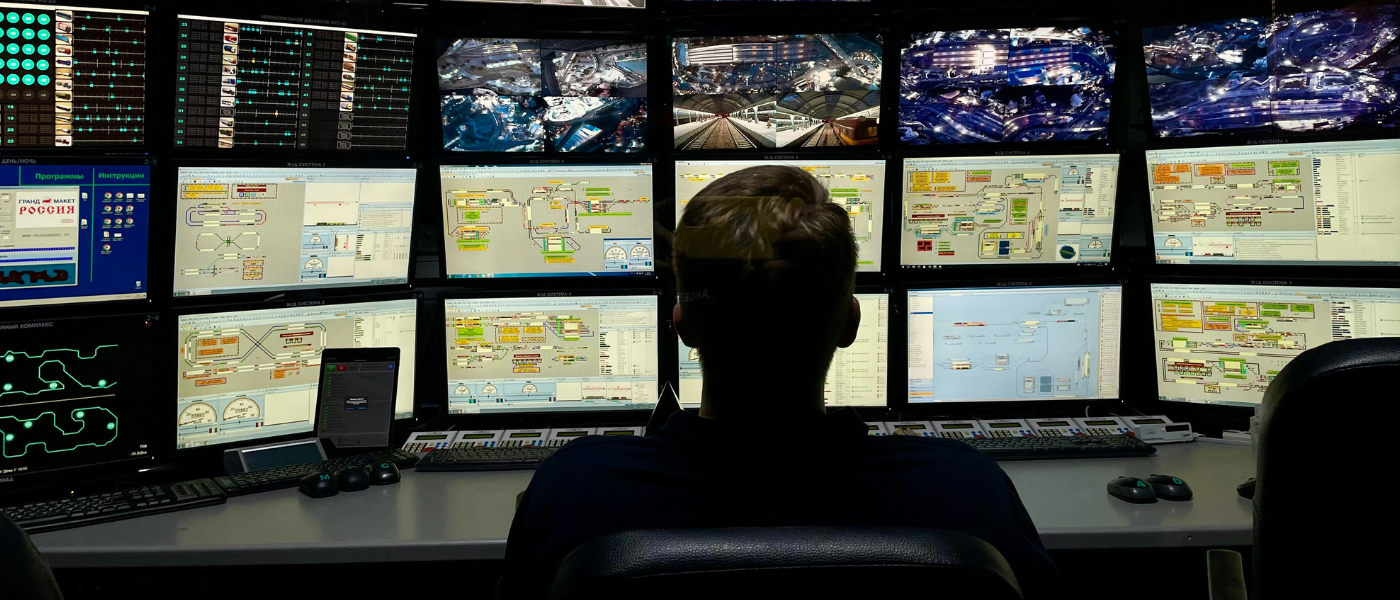The way police and investigators solve crimes has changed a lot in the past decade. There was a time when finding a single fingerprint could make or break a case. Now, detectives rely on technologies like high-definition cameras, data from phones and computers, and even artificial intelligence (AI) to catch criminals and prove their cases in court.
These advances have made police work faster and more accurate. However, using new technologies can also create problems. For example, how do we make sure the digital evidence is real and hasn’t been altered? How do we protect people’s privacy when police have access to so much personal information? And what happens if the technology gets it wrong? This article explains the most important new tools used in criminal investigations (CI), shows real-life cases, and explains what laws and rules are in place to protect everyone’s rights.
Types of Technology Used in Criminal Investigations
Criminal investigation technology includes many types of systems and devices. Use of each of these technologies varies according to the case and the professional using it. Whatever the case may be, anyone aspiring to work in criminal justice should have a comprehensive knowledge of modern technology, including these essentials:
1. Finding Digital Evidence
Most crimes today leave a digital trail of emails, texts, social media posts, and files stored online. There is often so much information that it’s impossible for humans to look through everything by hand. That’s why police use electronic discovery (e-discovery) tools that can quickly collect, sort, and search through mountains of digital evidence.
- Scale: The U.S. Department of Justice handled more than 6 petabytes (that’s six million gigabytes) of digital evidence in 2024.
- Speed: Special software (like Relativity AI) can review a million documents an hour and find messages or files that might be important.
- Smart Search: Investigators can type natural questions (for example, “show messages where someone mentions the ‘package’”) and quickly find what they need.
Courts are also making rules to handle digital evidence. For example, in the U.S., Rule 902(14) says machine-generated data can be used in court if it’s certified by an expert, so the expert doesn’t always have to testify in person. But technology isn’t perfect.
2. Using Cameras: CCTV, Drones, and Body Cameras
Surveillance technology has been a key element in criminal investigations throughout history. However, contemporary surveillance systems have become much more effective and comprehensive. CCTV cameras, drones, and body-worn cameras have become the common equipment that law enforcement agencies use to monitor and record criminal activity.
- Security Cameras (CCTV): Modern cameras are much clearer than before. They can record high-definition video, work at night, and even recognize faces or license plates. In the UK, the case Fairhurst v Woodard (2021) showed that home CCTV footage could help solve a privacy dispute, because it proved exactly who was where and when. Singapore’s city-wide camera system (PolCam) has helped in solving thousands of cases.
- Body-Worn Cameras (BWCs): Police officers in many places now wear cameras. These body cameras make sure police interactions are recorded, protecting both the officers and the public. In People v Johnson (2024), an Illinois court decided that body camera footage could be used as evidence, as long as there was a clear record of who handled it and when.
Some police departments, like the Los Angeles Police Department, now require officers to turn on their body cameras every time they interact with the public, and they even post reports online to show they’re following the rules.
- Drones: Drones are small flying robots with cameras. They can look into places regular cameras can’t. For example, in July 2025, police in Westlake, Ohio, used a drone to find a missing child much faster than usual. However, now police need a warrant for drone flights over 30 minutes to protect privacy.
- Phone Unlocking Technology
Smartphones store huge amounts of private information, like messages, photos, and location data. Police use tools such as Cellebrite UFED and GrayKey to recover data, even deleted files, from suspects’ phones. A famous example is the 2015 San Bernardino shootings, where the FBI asked Apple to unlock a terrorist’s iPhone. Apple refused, saying it would make all phones less secure, so the FBI paid a company to unlock it instead.
But there are limits. In Carpenter v United States (2018), the Supreme Court ruled that police need a warrant to track someone’s location over a long period, because it can reveal so much about their private life. In State v Gutiérrez (Arizona, 2023), phone data from TikTok proved that the suspect was at the scene of the crime, showing how powerful digital evidence can be.
3. Using Big Data and Predictive Policing
Some police departments use AI programs that look at huge amounts of data—like past crime reports, maps, and population statistics—to predict where crimes might happen next. This is called predictive policing.
Studies in 2024 showed that predictive policing tools, like PredPol, helped reduce property crimes by about 7–11% when used together with visible police patrols.
Who Uses Predictive Policing?
- The Los Angeles Police Department has used data and predictive analysis in many parts of the city for many years.
- Kent Police (UK) uses IBM’s Analyst’s Notebook to find links between criminals.
- Chicago Police Department combines prediction software with gunshot sensors to respond faster to shootings.
However, these systems aren’t perfect. Experts warn that predictive policing can reinforce existing racial biases or target certain neighborhoods unfairly, sometimes leading to more police activity in already over-policed communities
- Facial Recognition and Biometric ID
Facial recognition systems can match faces from security footage with pictures in police databases, sometimes in real time. In the UK, South Wales Police used a system called AFR Locate, but in Bridges v Chief Constable of South Wales Police (2020), the courts decided the police didn’t have enough safeguards or public input, so the program was considered unlawful.
Top Companies for Facial Recognition:
- Clearview AI has over 30 billion images and works with hundreds of U.S. law enforcement agencies.
- NEC’s NeoFace system, used in approximately 80 airports worldwide, achieved a top NIST benchmark score, registering just a 0.07% error rate (equivalent to 99.93% accuracy).
- Microsoft Azure Face API has also supported police work in London—Metropolitan Police trials used Azure cloud and AI technologies (excluding facial recognition on mobile cameras per policy) to store, analyse, and review body‑worn video footage captured across the city.
- VR-Based Crime Scene Reconstruction
It is possible to create 3D reconstructions of crime scenes using virtual reality reconstruction solutions. This is beneficial in addressing many of the issues that arise when visiting crime scenes, including the constant risk of destroyed evidence or contamination.
The use of virtual reality allows investigators to create walk-through experiences, enabling them to identify evidence that might not have otherwise been noticed. VR solutions are also used by aspiring forensic professionals to enhance their training so that they are better prepared when confronting real-life crime scenes.
Universities around the world are offering courses and training programs using VR for forensic science and crime scene reconstruction. For example:
- Savannah State University, USA: Offers an Undergraduate Certificate in Virtual Forensic Sciences that “provides an immersive learning experience with the university’s exclusive 3-D virtual-reality crime-scene investigation technology.”
- Purdue University Northwest (PNW) USA: The Center for Innovation through Visualization and Simulation (CIVS) built a first-of-its-kind VR crime-scene investigation training program now used in PNW’s forensic-science courses and outreach camps.
- Roger Williams University, USA: Runs a “one-of-a-kind, virtual-reality crime-scene training program” in its undergraduate Forensic Science major, letting students process scenes and practice blood-spatter analysis in VR.
- St. Edward’s University, USA: In the Crime Scene Investigations class, students wear VR headsets to explore 360° crime scenes, collect evidence, and follow interactive hotspots that mimic real investigations.
- University of South Wales, UK: Partnered with VR firm Immensity to recreate the university’s on-campus “Scene-of-a-Crime” house in VR, so Forensic Investigation students can rehearse crime-scene protocols anytime, anywhere
Explore: Public Safety Degree Online: Flexible Programs for Working Professionals
How Evidence is Handled and Presented
For new types of digital evidence to count in court, investigators must follow strict rules:
- Is the process reliable? Courts sometimes ask outside experts to check if software is trustworthy (using “Daubert” hearings).
- Has the evidence been protected? Investigators use checksums (MD5 or SHA-256) to prove files were not changed.
- Can it be authenticated? U.S. rules 902(13)-(14) and the UK’s Criminal Justice Act 2003 set standards for digital evidence.
Best Practices:
- Record exactly how and when evidence was collected.
- Only use copies made from the original; never work on the original device.
- Have a trusted expert sign a certificate about the evidence’s chain of custody.
If police make mistakes, evidence can be thrown out. In State v Allen (Ohio, 2022), doorbell camera footage was not allowed in court because the homeowner edited the video before giving it to police.
Training and Education
Universities and police academies are now teaching these new skills:
- University of Portsmouth (UK)—has a master’s degree in Digital Forensics.
- National Forensic Sciences University (India)—offers a master’s in Cyber Security.
- John Jay College (USA)—offers a degree in Digital Forensics and Cybersecurity.
Police labs are also working with private companies, like the FBI-Cellebrite Innovation Hub in the U.S. and Interpol’s Cyber Fusion Centre in Singapore. Certifications such as the IACIS CFCE (Certified Forensic Computer Examiner) and those offered by the Drone Forensics Group are examples of certifications that bolster police credibility and ability to provide expert testimony.
What are the Ethical and Privacy Concerns?
Technology has been of great help in criminal investigations. However, it has posed serious ethical and privacy issues. Numerous surveillance devices and facial recognition programs have been deployed to a great extent, and the question of personal rights and abuse has arisen.
Facial recognition and AI can result in racial profiling or policing. Numerous studies have shown that such systems are likely to be biased, falsely identifying the minority members more often than the representatives of other groups.
New technology makes police work easier, but can also invade people’s privacy. Laws are being updated to try to keep up.
- The GDPR in Europe gives people the right to see how computer programs make decisions about them.
- The California Consumer Privacy Act gives similar rights to Californians.
- The UK Investigatory Powers Act 2016 regulates police use of surveillance and phone tapping.
Interpol (the world’s police organization) says police should only use AI systems that can be explained and checked for mistakes. They have prepared a special AI toolkit for this purpose. United Nations privacy experts recommend that all new police tech should have an impact assessment first. If police break these laws, even good evidence can be thrown out sometimes, letting guilty people go free (the “fruit of the poisonous tree” rule).
Conclusion
Due to the application of technology, criminal investigations have changed fundamentally. Numerous sophisticated surveillance tools, including digital forensics and artificial intelligence, exist today. With the help of these tools, crimes can be solved more efficiently and accurately than ever. Investigators today have access to information and technology that was unimaginable. To maintain the security of the people and the dispensation of justice is now part of the job.
Privacy and ethical concerns should also be taken into consideration when incorporating these technologies. The use of technology in criminal investigation is gaining momentum and this necessitates a framework that balances innovation and individual rights. Technology will remain a major determinant in the development of criminal investigations as long as the necessary precautions are taken. As AI becomes more involved in law enforcement, the need to strike a balance between technological advancement and ethical accountability will become more critical. Artificial intelligence can enhance the safety of the population and safeguard civil liberties when it is properly regulated.








